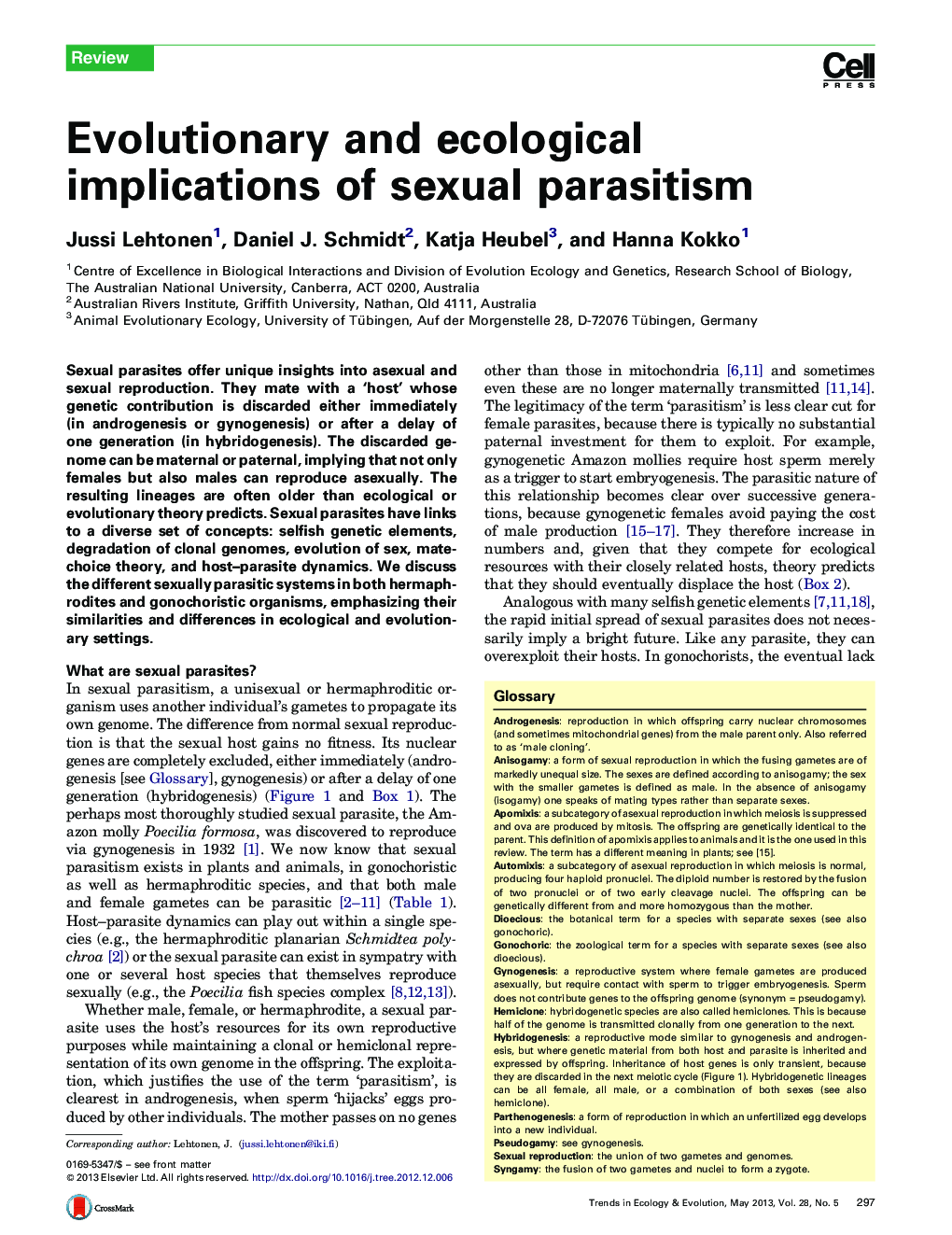| Article ID | Journal | Published Year | Pages | File Type |
|---|---|---|---|---|
| 142612 | Trends in Ecology & Evolution | 2013 | 10 Pages |
Sexual parasites offer unique insights into asexual and sexual reproduction. They mate with a ‘host’ whose genetic contribution is discarded either immediately (in androgenesis or gynogenesis) or after a delay of one generation (in hybridogenesis). The discarded genome can be maternal or paternal, implying that not only females but also males can reproduce asexually. The resulting lineages are often older than ecological or evolutionary theory predicts. Sexual parasites have links to a diverse set of concepts: selfish genetic elements, degradation of clonal genomes, evolution of sex, mate-choice theory, and host–parasite dynamics. We discuss the different sexually parasitic systems in both hermaphrodites and gonochoristic organisms, emphasizing their similarities and differences in ecological and evolutionary settings.
